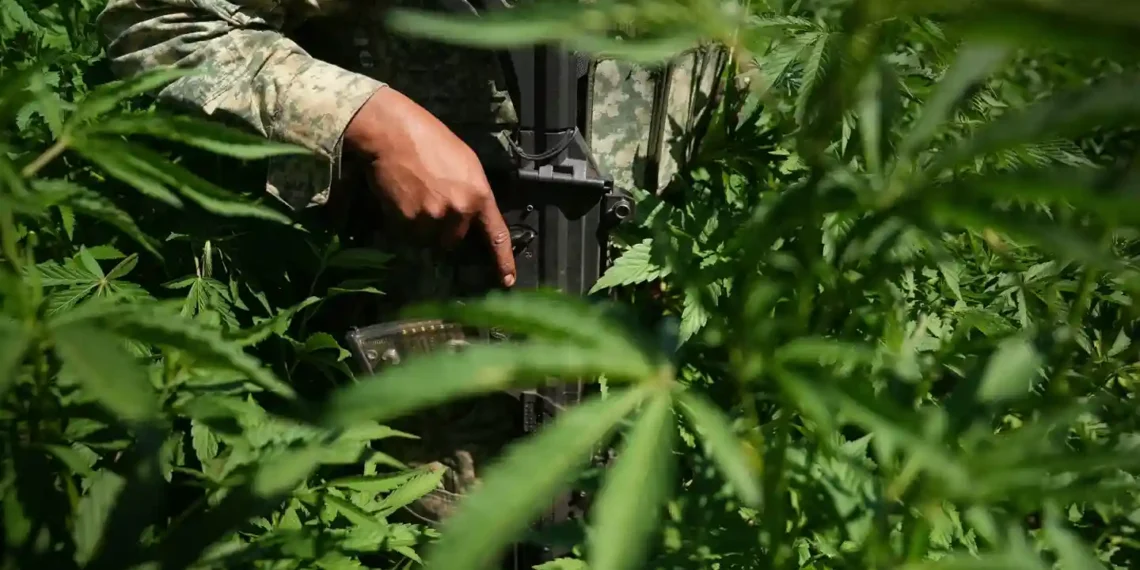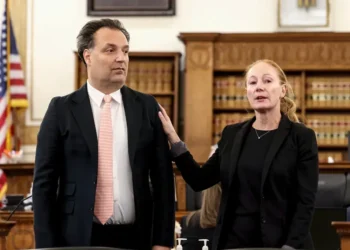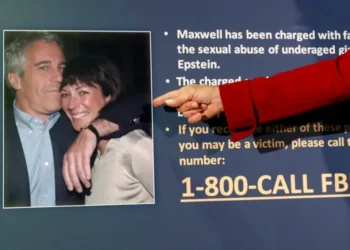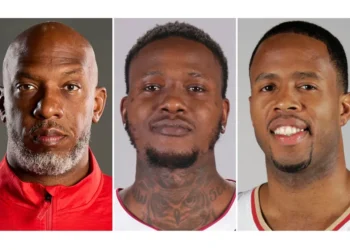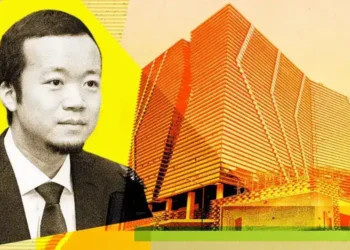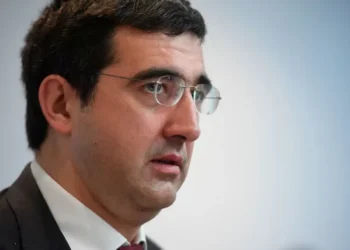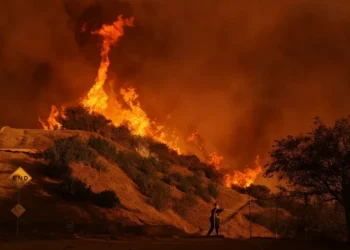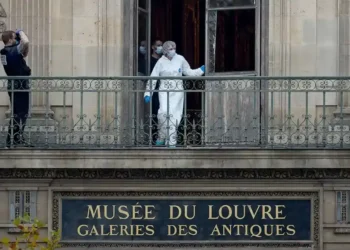Inside the Sinaloa Cartel: A Rare Encounter With a Member of Mexico’s Most Dangerous Criminal Network
CULIACÁN, MEXICO — In a dim bedroom tucked inside a quiet residential street, a man sits surrounded by weapons, radios, and whispers of violence. He’s a member of the Sinaloa Cartel — a group once run by Joaquín “El Chapo” Guzmán, now designated by the U.S. government as a foreign terrorist organization.
Speaking with him wasn’t easy. It took weeks of negotiation, verification, and reassurance that we weren’t law enforcement — not police, DEA, or CIA. He finally agreed to meet in a nondescript house in southern Culiacán, the cartel’s heartland. As we entered, we were told to cover our camera. Security was tight. A lookout scanned the street nervously, gripping a walkie-talkie as military vehicles rolled by outside.
The man before us wore a Joker baseball cap pulled low, a scarf over his face, sunglasses, and blue latex gloves to hide his tattoos. Leaning on his chair: an assault rifle. His operation, he said, is focused on one of the deadliest drugs devastating the United States — fentanyl.
“Of course, things are sad,” he admits. “But families have to eat.”
For nearly two decades, Mexican authorities have battled cartels with limited success. In the U.S., successive presidents have vowed to end the drug crisis. But under increased pressure from former President Donald Trump — who once declared cartels a threat to national security — and with violence on the rise, Mexico’s new leader Claudia Sheinbaum is shifting course.
Unlike her predecessor’s “hugs, not bullets” approach, Sheinbaum has taken aggressive action. More than 10,000 National Guard troops have been deployed to the northern border to stem the drug flow. In Sinaloa alone, hundreds of soldiers have joined the front lines.
In her first six months in office:
- 17,000 suspects were arrested for major crimes
- 140 tons of drugs were seized, including 1.5 tons of fentanyl and 2 million pills
Meanwhile, U.S. Customs and Border Protection reported seizing over 24,000 pounds of fentanyl in one year. A dose as small as two milligrams — just a few grains of sand — can kill.
Though the Mexican government insists fentanyl isn’t produced domestically, cartel members tell a different story. The chemicals often come from China, and the labs — many disguised or mobile — are operating in secret across the countryside.
Flying low in a Blackhawk helicopter with Mexican troops, the challenge becomes clear. Sinaloa’s vast terrain — over 22,000 square miles — provides perfect cover for hidden drug labs.
Unlike fields of marijuana or poppies, synthetic drug labs can appear almost anywhere. It takes little more than household pots, plastic vats, small reactors, and tarps to conceal them from the air. In one recently raided meth lab, soldiers found reactors, vats of liquid meth, and signs of a recent camp: food, water, and even a pair of jeans left behind.
A sign posted at the entrance read: “To make a deal: Cell phone.” Soldiers suspect it was an offer of a bribe.
Brigadier General Porfirio Fuentes Vélez says corruption is a constant battle — but insists there’s been real progress.
“Criminals are producing less because the government is coordinating better across all levels,” he says.
Still, off the record, many acknowledge corruption runs deep. One former security chief who led a crackdown was later convicted in the U.S. for taking bribes from the Sinaloa cartel.
In Culiacán, the streets are tense. Shootouts are frequent. More than 1,200 people have died in the past year — double the toll from the previous year. Hundreds more are missing.
The violence isn’t just from the state — it’s internal. After two high-ranking cartel leaders were arrested in Texas — Ismael “El Mayo” Zambada and Joaquín Guzmán López, El Chapo’s son — a brutal rift formed within the cartel.
Officials believe Guzmán López betrayed Zambada, sparking an all-out war between their factions. Both men deny the charges. But the damage is done. The once-powerful cartel is now tearing itself apart — and the city with it.
At a cemetery in Culiacán, Rosalinda Cabanillas lets out a heartbreaking wail as she clings to her daughter’s white coffin. Vivian Karely Aispuro, just 26, disappeared for 17 days before her body was found.
“Thank you for the great adventure,” sobs her sister, Alma Aispuro, as mariachis play nearby.
The violence has shattered any sense of safety. Children are taught how to take cover from gunfire. Schools sit half-empty. At night, the city is quiet — not from peace, but fear. Bars close early. Paramedics dart through the streets on motorcycles, responding to endless emergency calls.
Alma says her sister had no ties to the cartel. But in today’s Culiacán, even that may not be enough.
“Before this war, there were codes,” Alma says. “Women and children were off-limits. Not anymore.”
She lives in fear — not just for herself, but for all women.
“The day we found my sister, five more women disappeared,” she says. “I’m afraid for my family. I’m afraid no one will help us. No one will listen.”
Despite the crackdowns, the Sinaloa cartel remains alive — bruised, but functioning. Small-scale labs, nimble operations, and constant surveillance help them evade capture.
Miguel Calderón, from the State Council on Public Security, believes U.S. demand is the root of the crisis.
“If it weren’t for the military, this would be two or three times worse,” he says. “But unless the U.S. curbs demand, the cartels will continue.”
Back in the makeshift lab, the soldiers continue their work under the blistering heat — breaking down reactors and cleaning up toxic waste. It’s a small win in a much larger war.
And as mothers bury their daughters, and cities learn to live in fear, the question remains: How do you dismantle a criminal empire that feeds on desperation, secrecy — and endless demand?
This article was rewritten by JournosNews.com based on verified reporting from trusted sources. The content has been independently reviewed, fact-checked, and edited for accuracy, neutrality, tone, and global readability in accordance with Google News and AdSense standards.
All opinions, quotes, or statements from contributors, experts, or sourced organizations do not necessarily reflect the views of JournosNews.com. JournosNews.com maintains full editorial independence from any external funders, sponsors, or organizations.
Stay informed with JournosNews.com — your trusted source for verified global reporting and in-depth analysis. Follow us on Google News, BlueSky, and X for real-time updates.
